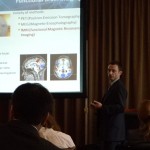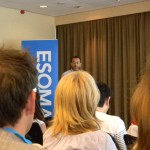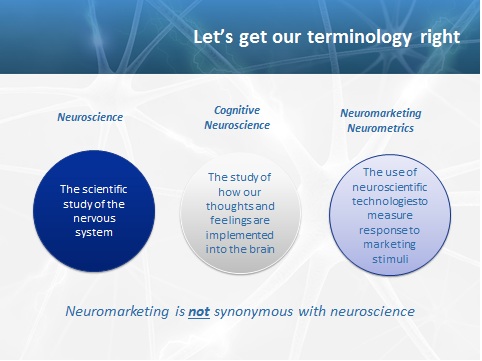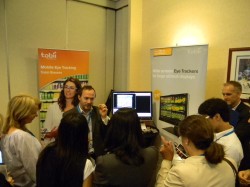Graham Page and Chair, David Penn then provided the audience with a critical view of the current techniques associated with this field. After noting that the use of neuroscience has revolutionised how we look at consumers, they pointed out the distinction between the various terms used when discussing this field, highlighting the differences between neuroscience, cognitive neuroscience and neuromarketing neurometrics.
Quoting Antonio Damasio, Penn noted that emotions are involuntary and we are “about as effective stopping them as we are a sneeze.” In short – emotions frame conscious rational responses at all times. “The more we think and consider the further you get from emotions…. Emotion without cognitive appraisal is really just arousal. People don’t or can’t tell us everything.”

Page then gave the attendees some key areas to think about when considering Neuromarketing:
- Does the method yield a meaningful results for brands, apps, marketing challenges?
- Do they deliver incremental insights? – tell us something we don’t already know
- Are the methods practical, as being connected with wires can be viewed as awkward or uncomfortable by respondents?
- Are they better predictors of behavior? – validation area is gaining a lot of attention. Most important to field moving forward.
A very interesting part of their presentation featured an ad on smoking cessation from Millward Brown and EmSense in China for Nicorette. Nicorette Sticky Stuff looked at how the ad measured with positive and negative emotional responses as well as cognitive effort from the respondents watching it. Interestingly, when the pack of cigarettes initially came on screen there was positive response from those trying to quit smoking and when a scene came on where the cigarettes where stuck to the smokers hand as he tried to quit – there was a negative response. The respondents identified with this emotionally. However when asked in a discussion, respondents chose the sticky cigarette pack as was the part of the commercial they liked the best. An interesting measure of how people feel versus how they may respond when asked.
Penn and Page concluded by noting that marketers “are not interested in science or complexity – they want simplicity – an easy to understand, single number solution….” and encouraged the attendees to be critical, pragmatic, selective and to consider whether this emerging area should integrate versus replace conventional research.

Omar Mahmoud, from UNICEF ended the morning presentations, with a truly enjoyable and somewhat hilarious presentation on why we lie. Although we average about 6 lies a day, not all are done with bad intentions. Sometimes, we just don’t remember or we may over/under exaggerate. When interviewing researchers on neuroscience, he found that they were intrigued but skeptical. We need Neuroscience to understand emotions and decision making and when applied to shopping, advertising and branding – it can truly help us to understand how the brain works. However, he noted that this can be difficult to get into an organisation – because the company may be too neutral, too rational or just wants results.
He then explained that as people, we think to a large extent in metaphors – i.e. an assembly line was a metaphor for the brain in the past and more recently the computer… both being misleading because the brain doesn’t work that efficiently.
A more accurate metaphor would be that the brain is more like parliament with opposing parties – i.e. a team of rivals; a neural-democracy….
Insight is key and people process information and memory very differently and should be looked at accordingly. Perception, priming and context are important. Brands have stronger value to people if the brand attributes match who they want to be as a person. A good example… Apple
Omar is an amazing presenter and this presentation really struck a chord with the crowd and made people think about just how honest their respondent’s really are and how to get true and honest insights into consumer behavior.
The morning then ended with an engaging panel discussion and a look and feel session and highlighted that even though everyone attending wants to know more about this area, not all are truly convinced on how to best capture emotion… Where is the data? Statistics… results… and then called for a repeat conference next year…. Let’s see what the afternoon brings first…





1 comment
Surely all the Nicorette case study tells us is smokers like being shocked by the sticky cigarette pack i.e. liked the negative emotion. So the findings from the 2 different methodologies are arguably consistent, and although I am an advocate of such new techniques as eye tracking and neuromarketing, I would be surprised if this positive reaction to a negative response didn’t also emerge using traditional qualitative interviewing techniques